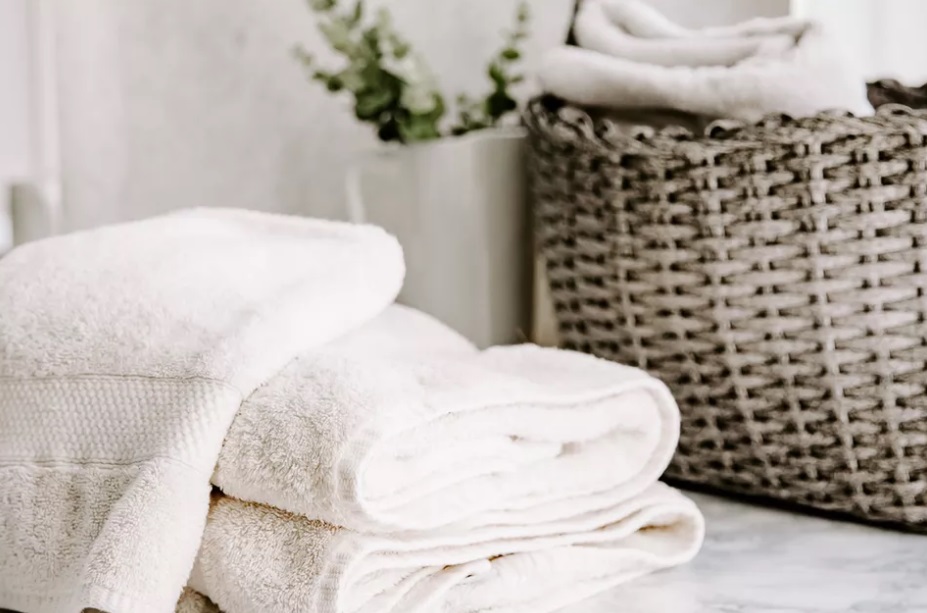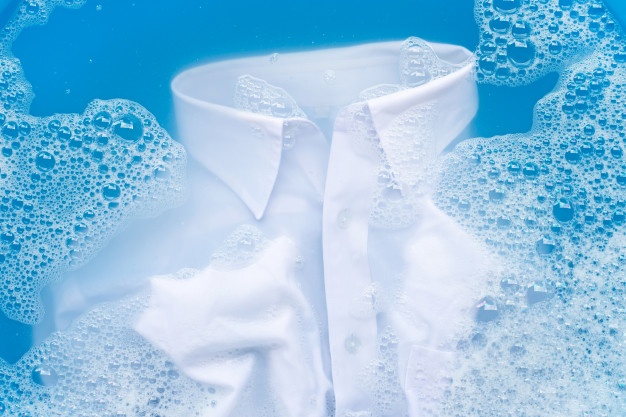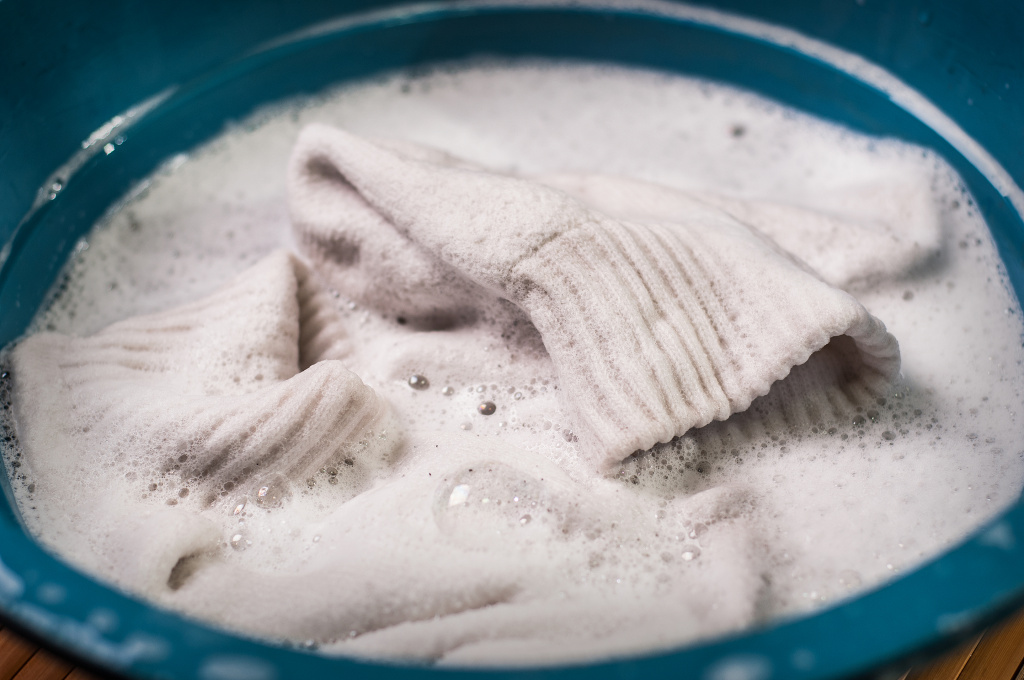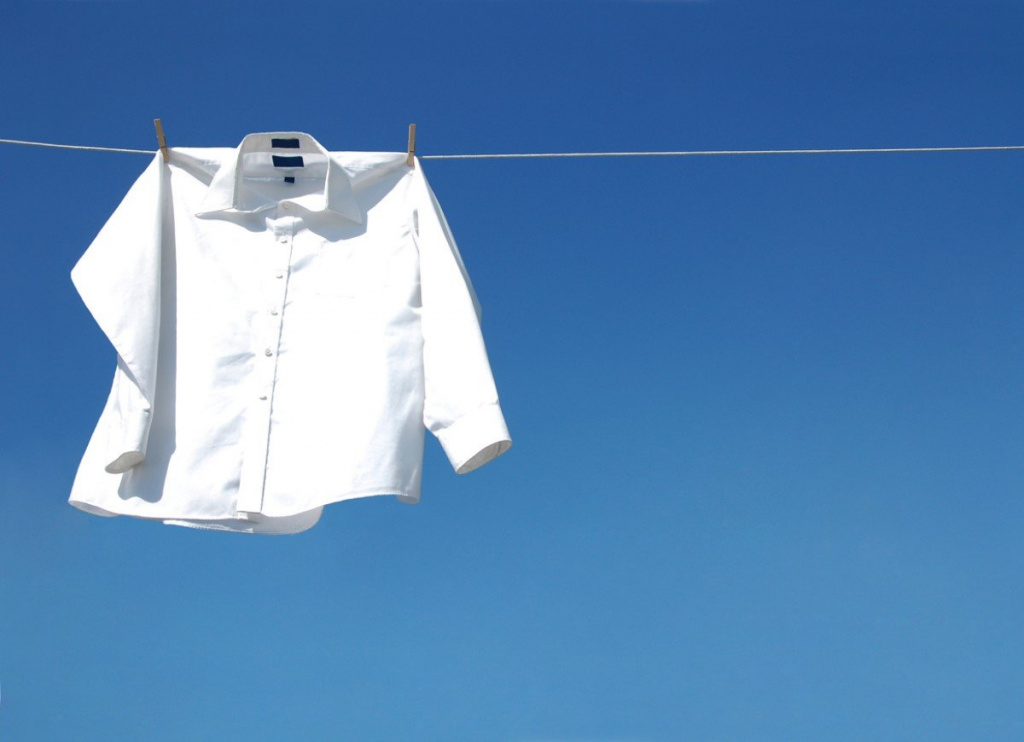Each hostess tries to find her own working method for bleaching clothes. Someone keeps these recipes a secret. And we have tested and offer you 10 home effective ways.
Why don’t all methods work the same

Having studied the reviews of the hostesses, we realized that often the same products bring a different effect. The fact is that some recipes are suitable for synthetics and cotton, others are contraindicated for artificial polymer fibers, others only work when heated, and others require pre-soaking clothes.
There are also situations when it seems that the thing has turned yellow from improper washing. But in fact, frequent water and bleaching procedures simply washed off the white paint, exposing a yellowish or gray base.
Often, home bleaching products do not cope with stains due to the persistence of the pigments that stain clothes. In this case, you can resort to intensive measures and use chlorine bleaches.
Another reason for the inefficiency of the methods is the selective activity of bleaching agents.
Drawing a conclusion, let’s say that you should not stop at one method and be upset that it did not help. With complex pollution, it may be necessary to use complex processing. We offer universal methods that work in most cases.
Required accessories
Often, heat treatment is used to combat dullness and stains at home, in other words, hot water or boiling. This is due to the fact that cleaning agents become active at high temperatures, and pollution softens and becomes more pliable.
Therefore, one of the necessary elements in our work will be a gas or electric stove.
Other accessories:
-
Metal container for boiling.
-
A plastic basin or other convenient utensils for washing and rinsing.
-
Home household products: hydrogen peroxide, ammonia, soda ash and baking soda, pharmacy aspirin, salt, washing powder, vegetable oil, vinegar, laundry soap.
-
Old toothbrush.
-
Sponge for dishes.
Let’s proceed directly to the methods of whitening. First, we give the most gentle ways that are suitable for children’s clothing.
Whitening baby clothes
Children’s skin is very sensitive to various chemicals. That is why even washing powders are made on the basis of natural ingredients.
For children’s clothing, we will use substances that are harmless in small quantities even if they enter the human body. Of course, the same products can be used to refresh adult clothes as well.
Soda
A universal remedy that can be applied to stains pointwise or prepared from it as a bleaching solution.
To remove stains of fat, grass, sweat, blood, urine, paint, you need to prepare a thick slurry. For this, 1 tbsp. l. sodium bicarbonate mixed with 1/2 tsp. water. For greater effectiveness, water can be replaced with 3 drops of dishwashing detergent.
The paste should be applied to the dirt, and left to act for 20–30 minutes. After that, wash the clothes by machine or by hand.
To make a bleaching solution, soda is diluted in water at the rate of 1 tbsp. l. soda per 1 liter of water. So for 5 liters of water you need 5 tbsp. l. sodium bicarbonate.
For bleaching, things are placed in a working solution and left in it for about 5 hours. After that, things need to be washed.
Aspirin
Pharmaceutical preparation well removes food contamination, removes grease, cleans greasy collars and eliminates sweat stains. From it you can make a paste for acupressure and a solution for bleaching.
To conduct selective whitening, you should do this:
-
Take 10 tablets of acetylsalicylic acid and crush them thoroughly with a spoon or other convenient way.
-
Add to the powder 10 tbsp. l. water and mix thoroughly. Aspirin is a poorly soluble substance, so it will not be possible to achieve complete dissolution.
-
Apply gruel to stains and leave the fabric in this state for 1 hour.
-
Rinse your clothes and put them in the laundry.
For general bleaching, you will need to prepare a solution of the desired volume. It depends on the amount of clothing being processed. You can make any amount of bleach, for this you need to take 1 aspirin tablet per 1 liter of hot water.
Whitening is carried out in the following sequence:
-
Pre-soak the laundry for half an hour and wring it out.
-
Place the items in the hot solution and leave overnight.
-
Launder things in the usual way.
Hydrogen peroxide
Hydrogen peroxide is a very active oxidizing agent. Therefore, when working with it, you need to protect your hands with rubber gloves.
To bleach, prepare the composition and process the clothes in this way:
-
For 5 l. water take 5 tbsp. l. hydrogen peroxide and mix thoroughly.
-
Place the laundry in the solution and leave to act for 2 hours.
-
If after the time has elapsed the result suits you, just rinse the laundry. Use conditioner if desired.
-
For greater effectiveness of the method, clothes can be washed in the machine.
Salt
Edible salt removes stains, brightens the overall tone, removes gray plaque. It is safe for synthetics and colored laundry.
If you need to remove the stain — wet it with water and generously sprinkle with salt. Next, for a couple of minutes, rub the salt into the fabric with your fingers. If the stain persists, leave the powdered and moistened stain on for 30 minutes.
For bleaching in 5 liters of hot water, pour 10 tbsp. l table salt. Soak clothes for 2 hours, then rinse them.
Boric acid for whites
This remedy is sold in a pharmacy in the form of a solution or powder. Both will do.
Let’s prepare a solution and process things that have lost their whiteness:
-
Dissolve in 1 l. boiling water 1 tbsp. l. boric acid and mix well. If there is a lot of laundry, you can cook any volume.
-
Dip the laundry in the solution and leave for 3–4 hours. Stir things periodically.
-
Rinse thoroughly after bleaching. You can do this in the machine by turning it on for a quick wash or rinse.
Universal bleaching agents

These methods can be used for adult and children’s clothing. However, exclude compositions containing aggressive components for washing children’s clothes.
Oxygen stain remover
The clothes of babies from 1 year old get dirty very quickly. This is due to the activity of children. This composition is suitable for children’s and adult white and colored clothes from any type of fabric.
Stains of paint, chocolate, berries, food, grass — this is not all that children’s clothes can be stained with. The bulk of the pollution disappears after the proposed method. The situation is more complicated, for example, with black paint, the pigment of which is very resistant.
To prepare the composition we need:
-
large saucepan;
-
3 tablespoons of washing powder;
-
2 tbsp stain remover (for example, Boss or Ace);
-
1–2 tbsp. l. baking soda;
-
2 tbsp sunflower oil;
-
1.5 l. boiling water.
We mix all the components in a convenient sequence and dilute them with water. Following are the instructions:
-
Put things in a bowl.
-
Put the container on the fire and simmer for 20 minutes over low heat.
-
Leave things in the solution overnight.
-
In the morning, take your clothes out and wash them in the laundry detergent on a fast setting without heat.
Whiteness Home Bleach
A whole mountain of yellowed, gray, spotted clothes can be bleached in one way. To do this, prepare a mixture. For 3 liters of hot water you will need:
-
sunflower oil — 2 tbsp. l.;
-
soda ash — 1 tbsp. l.;
-
whiteness — 2 tbsp. l.;
-
washing powder — 1 tbsp. (gel — 0.5 st.);
-
salt — 2 tbsp.
Pour all the ingredients into a large pot of hot water and mix thoroughly until completely dissolved. Then follow the instructions:
-
Immerse the contaminated items in a saucepan, put on fire and boil for 5 minutes.
-
Close the lid and leave to cool. You can soak things in the facility all night.
-
If it is not possible to boil, you just need to prepare hot bleach and put textiles in it for a day.
-
Rinse your clothes well.
Composition based on laundry soap and ammonia
The proven gentle agent is suitable even for delicate and children’s clothes. The whitening process will take some time, but the result will please you.
So, let’s start the preparatory stage:
-
Wash things first. To do this, put them in the machine or wash them by hand.
-
The next step is soaking. Rub wet clothes thickly with laundry soap and place in a small amount of hot water.
-
Remember carefully, stir and wash the laundry with your hands in the same solution.
Main stage:
-
Prepare bleach. For 3 l. hot water, take 4 tbsp. grated (liquid) laundry soap and 3 tbsp. ammonia (ammonia solution). Mix everything well until dissolved.
-
Put the textiles into the liquid.
-
Depending on the degree of soiling, leave to act for 2–12 hours.
-
Rinse clothes in clean water 2–3 times. You can add conditioner to the last rinse.
Removing a gray tint with peroxide and soda
Sometimes, with improper washing, things become gray. A mixture of baking soda and hydrogen peroxide will help refresh textiles in just 20 minutes.
All you need to do is put in 2 liters of water 1 tbsp. l. hydrogen peroxide and 1 tbsp. l. soda. Mix all the ingredients and place the clothes in the solution for 20 minutes. At the end, wash things by hand or in a typewriter on a fast setting.
Returning whiteness to yellowed jeans
A gray or yellow tint of jeans can occur for two reasons: improper washing of products or washing off white dye from fabric fibers. Unfortunately, it is visually difficult to recognize the true causes. So let’s try to revive the white color.
Note one important point. The recipe uses hot water, which affects the shrinkage of natural denim. If you are afraid of this, it is better to use another safe method.
For the first option, you will need the following tools:
-
grated laundry soap — a quarter of a piece;
-
washing powder — 1 tbsp. l.;
-
soda — 1 tbsp. l.;
-
vegetable oil — 2 tbsp. l.;
-
boiling water — 5 l.
First, mix the dry ingredients, add a glass of hot water to them. Then pour the concentrate into a container with 5 liters. boiling water and stir. Put the thing in the solution, close the lid and leave for 5–7 hours.
The second option also includes the use of boiling water. Here we use oxygen bleach.
Mode of application:
-
Mix 2 tbsp. washing powder, 2 tbsp. oxygenated bleach, 2 tbsp. vegetable oil.
-
Add to mixed ingredients 1 tbsp. hot water and stir.
-
Pour the concentrate into 5 liters. water.
-
Load the clothes and leave to process under the lid for 2–3 hours.
Tips for keeping things white
In order not to make efforts in the struggle for the whiteness of tarnished things, We recommend that you adhere to the following rules:
-
Do not store contaminated clothing for a long time. Sweat stains and greasy dirt appear and become difficult to remove.
-
Be sure to separate clothes before washing. Do not put even light-colored things with a beige, bluish or pink tint in the drum along with pure whites. Any, even a light color, can make white clothes gray or yellow.
-
Use the appropriate washing temperature for each type of fabric. Usually information about this is given on a label sewn on the inside of the item.
-
For white and colored items, choose the appropriate detergent.
-
Add a quarter cup of vinegar to every wash. This will help maintain the whiteness of the textile.
-
Periodically take out and check things that you wear very rarely. Sometimes, when stored for a long time, yellow spots appear on them.
-
Do not use excessively chlorine-containing and other aggressive liquids. They can discolor dyes, destroy fabric fibers. Also, at first glance, sparing oxygen bleaches quickly thin the fibers and make them fragile.
-
White clothes can also suffer from the fact that there was black clothes in the drum in the previous wash. Therefore, to maintain perfect whiteness, first turn on the machine for idle rinsing.
-
For outerwear made of white fabrics, we recommend professional dry cleaning.
Use tried and true methods to wash your clothes. Simple care, periodic whitening — this is what will allow you to surprise others with the radiant whiteness of your clothes.



Добавить комментарий
Для отправки комментария вам необходимо авторизоваться.